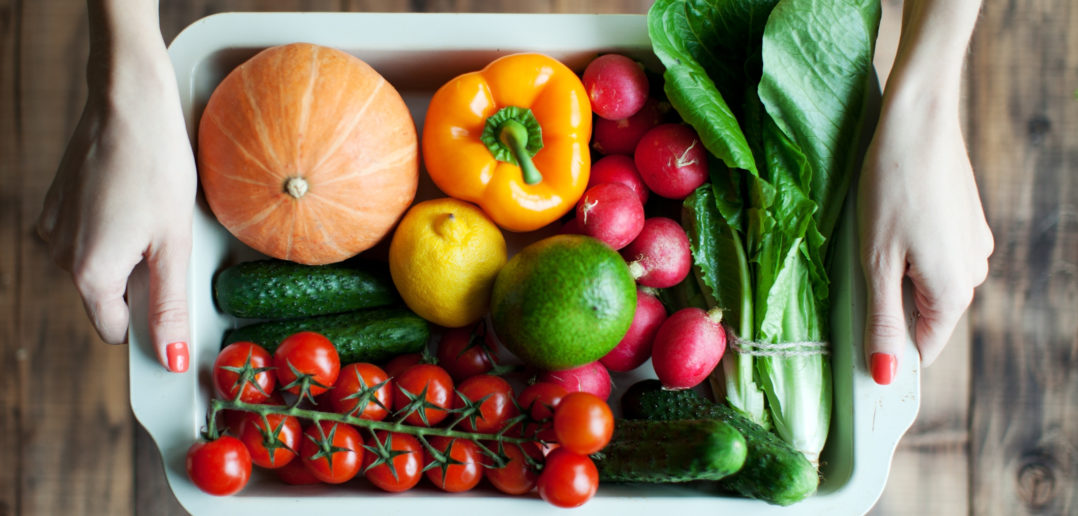The trends in the food and beverage industry heading through 2018 and beyond reflect a lot of societal and cultural change taking place in people’s approach to diet. There’s plenty for those in industry to be mindful of, from ingredients to technology to packaging.
It all begins with the emergence of those who are known as the Authentic Fresh food and beverage buyers.
As of this writing, Authentic Fresh buyers make up 11 percent of all food and beverage consumers. That number is expected to rise over the next few years, and with it the power and influence that the Authentic Fresh wield over the food and beverage industry.
The demands and expectations that this group of grocery shoppers places on manufacturers and sellers of foods and beverages are many, and their standards are exceedingly high. In surveys conducted by Evergreen Packaging in conjunction with EcoFocus Worldwide, 100 percent of Authentic Fresh buyers stated that it is of the utmost importance to them to choose “freshly prepared foods and beverages made with high-quality ingredients”.
But that’s only the beginning. Nearly all of the Authentic Fresh consumers said that their choices need to be “natural” (as opposed to artificial or having artificial ingredients such as flavorings), they have changed what they buy in order to avoid artificial ingredients, and they avoid choices that aren’t packaged responsibly. “Responsible” packaging means that it doesn’t expose the food or beverage to undesirable chemicals or tastes, it is recyclable, and its materials are renewable.

Mixed use retail and leisure: What happens next? – White Paper
Authentic Fresh shoppers are concerned about the companies behind the food and beverages that they buy, too. The vast majority stated that seek brands made by smaller companies and with Fair Trade certification. They also want companies or their brands to be certified “Non-GMO Project”, “Rainforest Alliance”, and/or “USDA Organic”.
The trends in the food and beverage industry heading through 2018 and beyond reflect a lot of societal and cultural change taking place in people’s approach to diet. There’s plenty for those in the industry to be mindful of, from ingredients to technology to packaging.
It’s imperative that restaurateurs and chefs keep watchful eyes on these consumer trends in food and beverage preferences, given that what people demand from grocery stores they demand with thrice as much expectation from the restaurant, the bistro, the café, the trattoria. As Hudson Riehle, senior vice president of research at the National Restaurant Association (in the U.S.), puts it, “Local, vegetable-forward, and ethnic-inspired menu items will reign supreme in [2018]. Guests are implementing these trends in their own lifestyles and want to see them reflected on restaurant menus. In response, chefs are creating more items in-house and turning to global flavors.” (Emphasis ours.)
The vast majority also stated that they pay close attention to the origins of the ingredients in their choices, and that country of origin is very important to them. Nearly all Authentic Fresh shoppers (95%) stated that they try to choose only those products that contain certified “sustainable ingredients”.
As if all of that isn’t enough, the vast majority of Authentic Fresh shoppers stated that their chosen grocery stores need to be: socially responsible; environmentally friendly; stocked with a wide selection of all-natural, organic, and locally grown products; provide helpful information about recycling; and (of course) offer affordable prices.
While some surely find the Authentic Fresh grocery shoppers to be heavy handed, perhaps even “fanatical”, their demands are not out of sync with the overarching food and beverage buying trends prevailing in 2018 and probably for years to come. Across marketing segments and age groups, consumer tastes in food and beverage choices are changing significantly. Whether it’s preparing something like overnight oats (fast and easy, but at once tasty and healthy) or eating something exotic to give one’s palate a taste of adventure and “diversity”, people today want to prepare and eat and drink stuff that they might share on Periscope or Instagram.
Food sustainability and safety are at the forefront of the minds of grocery shoppers and the food and beverage industry alike. Consumer confidence in the safety of products and the practice of stewardship of the Earth by those producing them has been slowly but steadily waning for years now. A great many consumers, in particular, have stated that they’ve changed their diets in the last five to ten years because of fears about food safety, first and foremost the safety of the beef and poultry supply. Businesses that go out of their way to ensure their food and beverage products, safety and sustainability, and make it clear that they’re doing so, are going to have a huge competitive advantage now.
Indeed, transparency is more important now than it have ever been before. Across all generations, consumers are more savvy and informed about healthy food and beverage choices than at any time in the past. The “clean labeling” movement isn’t going away; indeed, it’s only getting stronger. Shoppers want labeling that’s easy to understand and straightforward. They also prefer foods that don’t contain too many ingredients or any GMO ingredients. (Their fears here are probably unfounded or grotesquely exaggerated. But, try telling them that!)
Another thing that shoppers want is a pleasurable eating and drinking experience that’s not going to make them feel bad (physically or psychologically) later on. Smart industry players will therefore take note of the ascending love for cold-brewed beverages (like coffee) and fermented foods (like kimchi or yogurt). Applying food technology to create better recipes ought to be an industry priority here, too.
In all of this, food and beverage consumers today also desire to experience people’s culinary heritage. It’s defined as “highlighting the people who bring culinary traditions to life” along with “the personal stories that define our food.”
All of this is reflected in what chefs, cooks, and bartenders need to prepare as we head into 2018 and beyond. Recalling what Hudson Riehle stated above, here’s the “Top 10 Concept Trends List” from the (U.S.) National Restaurant Association:
Hyper-local
Chef-driven fast, casual concepts
Natural ingredients, “clean” menus
Food waste reduction
Veggie-centric or vegetable-forward cuisine
Environmental sustainability
Locally sourced meat and seafood
Locally sourced produce
Simplicity, back to basics
Farm, estate-branded items
Oh, yes. As a restaurateur, by paying close attention to what people are demanding in grocery stores, you can always be one step ahead (at least) in figuring out what they’ll demand from and expect of you as guests in your establishment.
Top photo © yulkapopkova/GettyImages


![[NEW] MAPIC interview: In conversation with Giovanni Porcu, CEO and founder of Doppio Malto](https://www.beyondretailindustry.com/wp-content/uploads/2024/03/DM-Magenta_1-351x185.jpeg)

